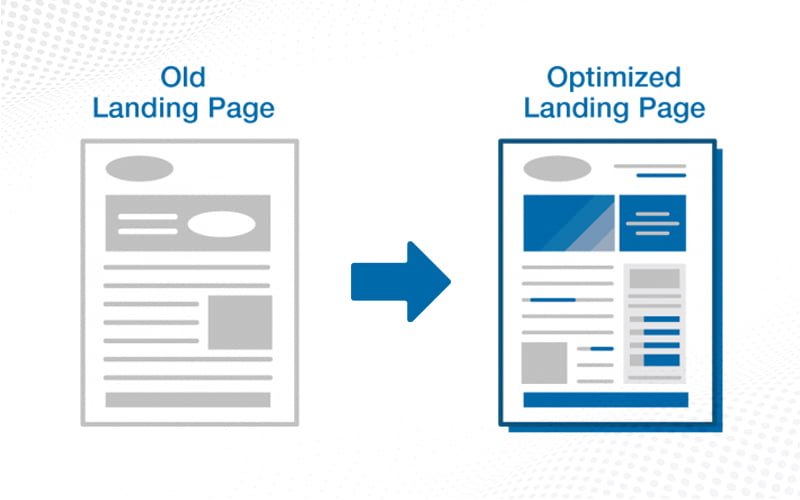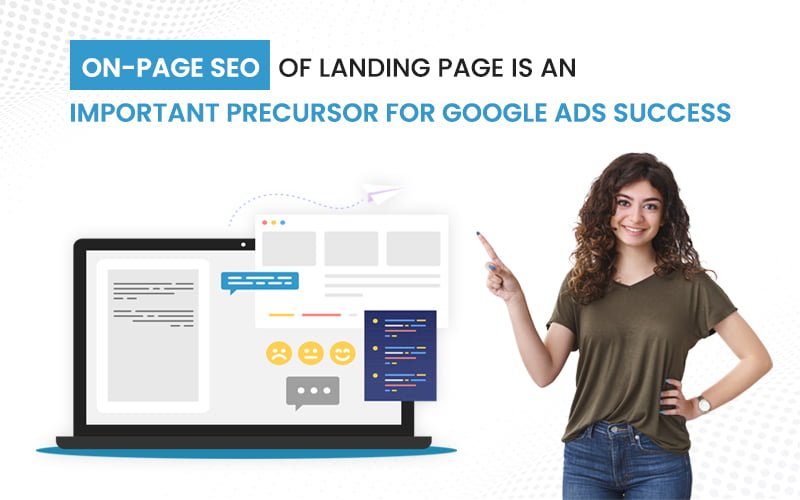On-page SEO is essential for every website that wants to appear high in Google’s search results. It is also, nevertheless, required by the websites that rely on Google Ads for revenue.
On-page SEO is a vital precursor for the success of Google ads because it ensures that your web page is optimized for the keywords you’re targeting in your ads. Lower cost per click and a higher quality score are indicators that your website is optimized for the keywords you’re targeting, and these factors can have a significant impact on its click-through rate (CTR) and, ultimately, your conversion rate, which can determine the success of your Google ads management services.
I’ll discuss why On-Page SEO is so crucial for the success of Google Ads in this blog.
Google Ads is a pay-per-click online advertising platform where businesses pay to get their advertisements ranked at the top of the search results page so that they can get traffic on their website that can bring them good business. Since the platform runs on pay-per-click (PPC) advertising, you have to pay only when a visitor clicks your ad.
Google Ads performance is determined not only by the keywords or Ad creatives used but also by how well your landing page performs and is optimized. A well-optimized landing page improves your ad quality score. There are several important aspects that influence campaign success, and the Google Ad quality score plays a significant role in this.
What is the Landing page?
The landing page is the page that a user or potential customer arrives at after clicking an advertisement. A landing page is designed to provide information about your company, product, or service to any new visitors. The necessity of using Optimized landing pages in your marketing campaign has gained significant traction in recent years.

Google ad landing pages have a significant impact on your ad position, quality score, and budget. The best practices of On-Page Activities for landing pages can lower your bid prices and increase conversion and sales.
Google wants to make sure there is relevancy suppose you own a homestay and your landing page has keywords related to homestays when you run an Ad that has target keywords related to Hotel booking you will end up paying more CPC as compared to the ones that are related to homestays. If you maintain relevancy then your Google Ads cost you fairly.
Here are some of the advantages of landing page optimization:
- Improvement in Ad Position
- Decrease in Bounce Rate
- Superior Quality Score
Quality Scores: How Significant Are They?
Quality Score is the score given by Google to your Keywords, Advertisement, and Landing Page in terms of how relevant they are with respect to each other.
It is shown and represented by a number between 1 and 10. The greater the quality score, the better the Advertisement.
The following three elements combine to provide the quality score:
- Expected Click-Through-Rate
- Relevance of the Ad
- User Experience on the Landing Page
These elements affect how well your advertisement performs, which in turn influences the quality score. As a result, quality scores are vitally important to the success of any advertising campaign.
Best Practices For Optimizing Landing Pages
- Page speed
As seen slow loading pages have a greater bounce rate, a shorter average time spent on the page, and worse conversion rates. Therefore, you must make sure that the content on your landing page loads immediately since the quicker it does so, the more likely it is that the prospect will see your offer and ultimately convert.
According to Google’s research, pages that take three seconds to load have a bounce rate that is 32% greater than pages that load in one second.
- Mobile Optimization
Google places an emphasis on improving smartphone usability. The implementation of initiatives like mobile-first indexing, responsive advertisements, and accelerated mobile pages has been done to ensure that advertisers take mobile optimization seriously.
Therefore, you st make sure that when a mobile ad is clicked, viewers arrive on a post-click landing page that is both mobile-responsive and mobile-optimized. It is not just important for Google Ads but many digital marketing agency also agree that this is quite important for SEO as well.
- Relevancy
Your post-click landing page should really be a continuation of your advertisement. Therefore, you must make sure that the pre-and post-click experiences are relevant and that the messages are consistent.
Make sure you send users who clicked on an advertisement for a particular product to a landing page just for that offer rather than a homepage or generic product page with a variety of other possibilities, which would divert them from their intended goal.
A consistent message from your advertisement to your post-click landing page fosters relevancy and raises conversion chances. Relevant content enhances the user experience on your landing page and also increases the likelihood that you’ll see advertising conversions. A positive brand impression, decreased cost per click (CPC) and cost per acquisition (CPA), and enhanced ROAS are the outcomes.
- Easy to navigate
The main goal of landing page design is to make your offer to users as clear and precise as possible. This entails structuring and creating your page so that users can easily navigate through it and find the information they need without difficulty.
- Clear CTA button
The post-click CTA button on the landing page completes the user experience that began with the ad click. Therefore, it’s crucial to make sure your CTA is clear and tailored to the offer.

With these suggestions, you can start enhancing the user experience on your landing page and work toward achieving a high Google Ads Quality Score.
